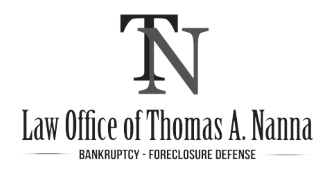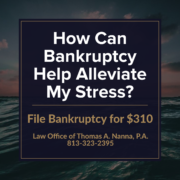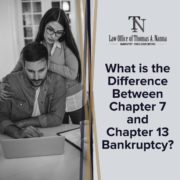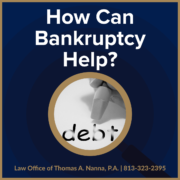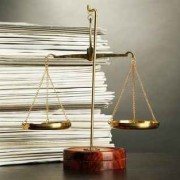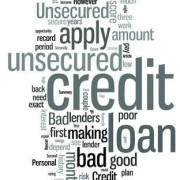How Can Bankruptcy Help Alleviate My Stress
(part two)
We are continuing our series on how filing bankruptcy helps relieve the stress of being unable to fulfill certain financial obligations. As a premier bankruptcy law firm serving the Tampa Bay area, we help clients with bankruptcy, IRS resolution, liens, foreclosures, credit problems and home buying assistance. Our bankruptcy lawyers are often asked about the bankruptcy process and how it can help alleviate stress surrounding unpaid bills and other financial issues. Our previous article discussed how filing bankruptcy can dissolve most unsecured debt and eliminate responsibility for some secured debt. Today, we will look at two more ways filing bankruptcy can help.
Postpone Foreclosures, Evictions and Repossessions
If you are facing a foreclosure, eviction or repossession, bankruptcy can postpone the process. Filing bankruptcy initiates an automatic stay. So, an eviction that is in litigation will be temporarily suspended. If you are facing a foreclosure or repossession, this will be halted. Once the stay is lifted, if you filed Chapter 7, you will be required to either bring your account current or relinquish the property. If you filed Chapter 13, you may be allowed to keep the asset provided you work on catching up on past payments due. Your bankruptcy attorney will evaluate your financials and make a recommendation that best suits your situation.
Stop Collections and Harassment
One of the biggest benefits of filing bankruptcy is that most collections, wage garnishments and harassing phone calls stop. This provides tremendous relief and some breathing room as your bankruptcy lawyer strategizes the best outcome for your specific situation.
When it comes to filing bankruptcy, Tampa residents trust the Law Office of Thomas A. Nanna. We are an experienced bankruptcy law firm dedicated to handling your case in a professional manner. We work with clients throughout the Tampa Bay area including Pasco, Pinellas, Hillsborough, Manatee, Sarasota and Polk counties. Give us a call to learn more today.
